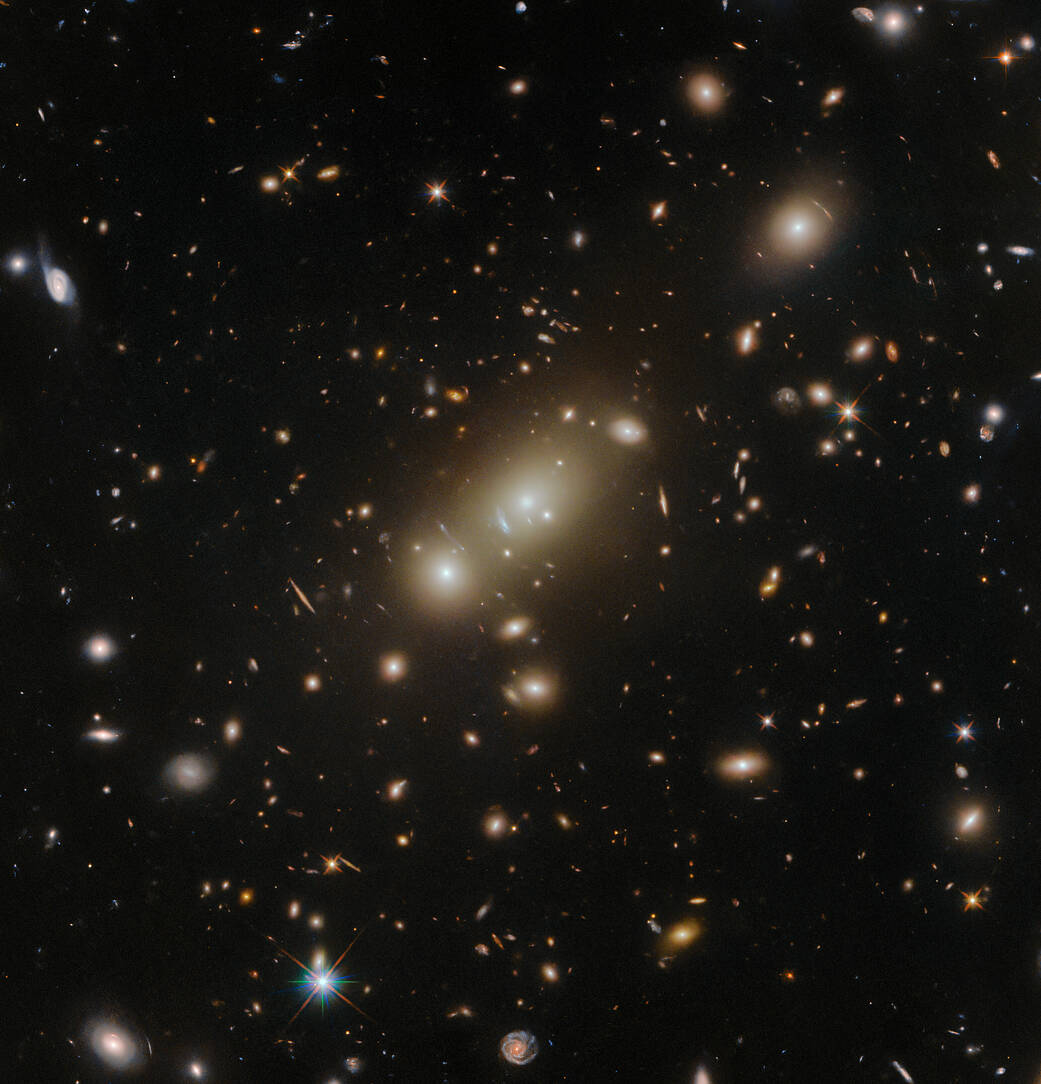The massive cluster Abell 3322 is featured in this image from the NASA/ESA Hubble Space Telescope, in which the galaxy 2MASX J05101744-4519179 basks in the center. This distant galaxy cluster is a cosmic leviathan that is highly luminous at X-ray wavelengths. Observing galaxy clusters like Abell 3322 can advance our understanding of the evolution and interactions of dark and luminous matter in galaxy clusters, and also reveals powerful gravitational ‘telescopes’ that magnify distant objects through gravitational lensing. Knowing the location of these lenses can enable future observations with both Hubble and the NASA/ESA/CSA James Webb Space Telescope. The galaxy cluster is located in the constellation Pictor, around 2.6 billion light-years from Earth.
Two of Hubble’s instruments joined forces to create this image: Wide Field Camera 3 and the Advanced Camera for Surveys. Both are third-generation instruments that offer superb image quality and high sensitivity to astronomers studying a range of scientific questions. Both instruments provide images of wide areas of the night sky, but view slightly different parts of the electromagnetic spectrum. WFC3 spans the spectrum from the ultraviolet through to visible light and the near-infrared. In contrast to the wide panchromatic coverage of WFC3, ACS was optimized for visible-light observations.
Text credit: European Space Agency (ESA)
Image credit: ESA/Hubble & NASA, H. Ebeling
这张由NASA/ESA哈勃太空望远镜拍摄的大质量星系团Abell 3322的照片,其中2MASX J05101744-4519179星系位于中央。这个遥远的星系团是一个宇宙利维坦,在X射线波长下非常明亮。观测像Abell 3322这样的星系团可以加深我们对星系团中暗物质和亮物质的演化和相互作用的理解,也揭示了通过引力透镜放大遥远物体的强大引力“望远镜”。了解这些透镜的位置可以使哈勃和NASA/ESA/CSA詹姆斯·韦伯太空望远镜的未来观测成为可能。该星系团位于画像座,距离地球约26亿光年。
哈勃望远镜上的两种仪器联手创造了这张照片:广角相机3和高级巡天相机。两者都是第三代仪器,为天文学家研究一系列科学问题提供了极好的图像质量和高灵敏度。这两种仪器都能提供大范围夜空的图像,但观察到的电磁波谱部分略有不同。WFC3覆盖了从紫外线到可见光和近红外的光谱。与WFC3的全色覆盖范围相比,ACS对可见光观测进行了优化。
文稿来源:European Space Agency (ESA)
影像来源:ESA/Hubble & NASA, H. Ebeling



